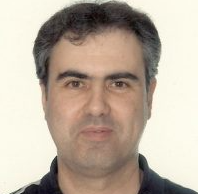
Prof. Dr. Elias Stathatos is a professor in the Electrical and Computer Engineering Deptartment at the University of Peloponnese, Greece and Head of Nanotechnology and Advanced Materials Laboratory (N&AML). His research interests are focused on third-generation solar cells and their characterization. In particular, Prof. Dr. Stathatos is interested in the conversion of solar energy to electricity using dye-sensitized, quantum dot and perovskite solar cells employing nanostructured materials.
The following is a short Q&A with Prof. Dr. Elias Stathatos, who shared his vision for the journal with us, as well as his views of the research area and open access publishing:
1. How has your experience been as the Section Editor-in-Chief of “Optoelectronics” so far?
My experience as the Section Editor-in-Chief of “Optoelectronics” has been truly rewarding. I've had the opportunity to work with an exceptional team of experts in the field, and it's been a pleasure to help shape the content and direction of the journal.
2. We know that you are also working as the leading Guest Editor of a Special Issue. How do you feel about your experience as a Special Issue Editor?
Serving as a Special Issue Editor has been a unique experience. It allows me to focus on a specific area within optoelectronics and collaborate closely with authors who are experts in that domain. It's a fantastic way to bring together cutting-edge research and share it with our readers.
3. What made you choose to work with us knowing that we are an open access digital publisher?
Open access aligns with my belief in making research more accessible to a broader audience. It ensures that knowledge is not confined behind paywalls and can benefit researchers, students, and professionals worldwide. Joining an open-access publisher like “Optoelectronics” was a natural choice for me.
4. Do you have any new topics or new directions to which we should pay more attention?
Absolutely, I believe we should pay more attention to emerging areas such as quantum optoelectronics, integrated photonics, and sustainable materials and technologies in optoelectronics. These areas hold immense potential and can significantly impact various industries and applications.


